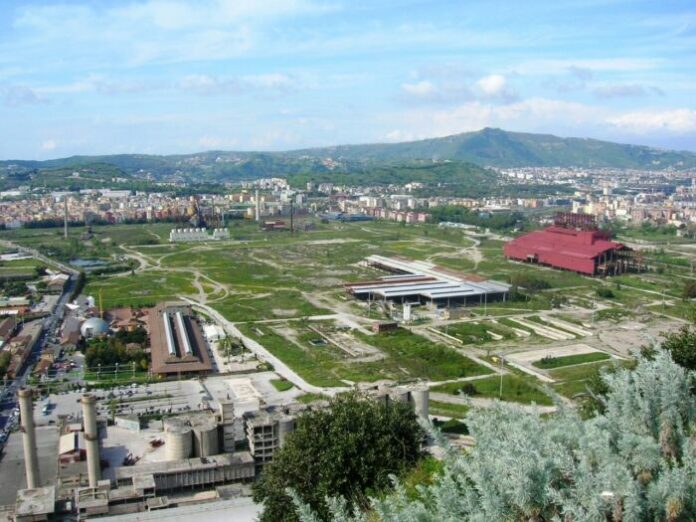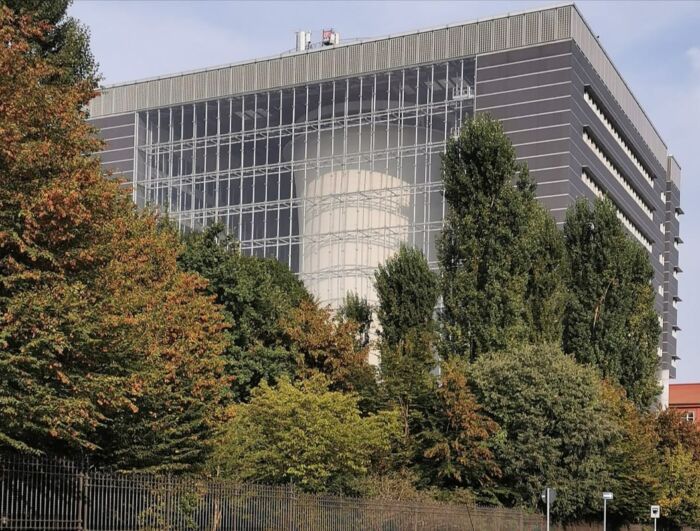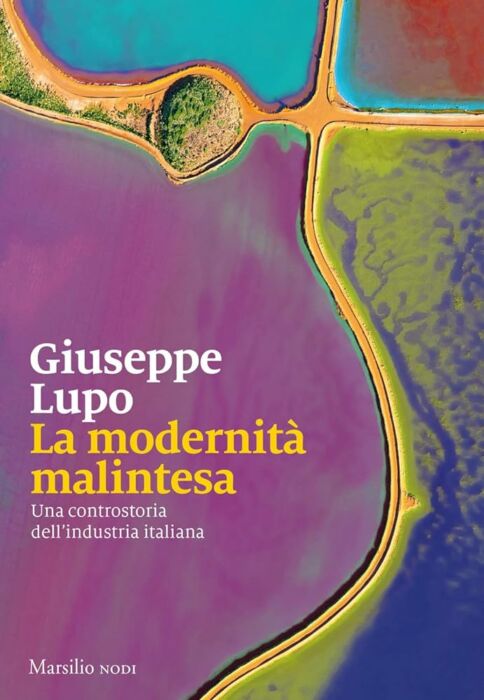
If you walk down Viale Sarca in Milan, the road that once led to the outskirts of the big factories, you see the old Pirelli cooling tower caged inside an elegant glass and metal structure. It is a monument, not a ruin, a kind of celebration of a bygone era but without the rhetoric of remembrance, because the natural light and that of the street lamps, which day and night filters through the scaffolding, draws a geometric composition of shadows on the sides. Everything around it – the multicoloured walls of shopping malls, office buildings, apartment blocks, asphalted roadways, trees – seems to be there only to admire its majestic yet unobtrusive elegance, the rational and unapproachable image of an epochal transformation, of which the tower represents the last bulwark. Viale Sarca can be taken as the key to understanding the times we are going through. For seventy years the landscape has been changing face: from post-war suburbia to the stage of post-modernism, with the Bicocca University and the Teatro degli Arcimboldi replacing the warehouses of the workshops, with the headquarters of multinational companies supplanting the old, romantic red-brick warehouses and saw-shaped roofs.
The exact opposite is the panorama that opens up from above the hill of Posillipo, in Naples, when you reach the top of the hill and look out across to the sea. No one, arriving there, once past the line of Art Nouveau villas, would be able to imagine the esplanade below, which looks more like a desert coloured by rust than by uncultivated grass, a forgotten horizon from which rise the wreckage of metal constructions, dented cylinders, abandoned scaffolding, tools out of use. The Angel of History that Walter Benjamin describes in his Angelus Novus, the terrible and resigned witness to the tragedy that progress brings with it, has indeed flown over there. The sooty esplanade of Bagnoli is what remains of the great Ilva plant, the steel giant that stopped producing steel in the early 1990s and was decommissioned to make way for something that, in future plans, should perform the functions of an open-air museum.
The Bicocca district, in Milan, and the Bagnoli district, in Naples, are spaces dense with history, a humanity has put down roots there and believed in the fairytale of a twentieth century that would provide work and civilisation, well-being and hope. Technological development has been stronger than expected, it has left on both the marks of its passage, with a different orientation: in Milan, life continues to flow modified by other liturgies, in Naples, on the other hand, that immense area has the appearance of a cemetery where memory no longer even lives.
A journey within a fairly short time – a hundred years or so, from the Fordist factory to green production – could begin from these two extremes, and yet far more boundless than the years that have passed indicate: a journey that has all the hallmarks of a reconnaissance of the twentieth century, in its flattering promises and its dystopian nightmares, an itinerary between assembly lines in workshops, in canteens, alongside workers and employees, managers and entrepreneurs, even zigzagging among the objects that are the offspring of an all-Italian artisanal creativity and have nourished, with the quality of design and essential beauty, the imagination of a people awakened from the torpor of the peasant civilisation and projected with great strides towards the mirage of industrialisation and mass society.
In a journey in stages, there is the account of the geographies where the impact of socio-economic processes has been strong, and at the same time there is the investigation of the anthropological manifestations that have characterised the relationship between men and machines, characterised by the climate of distrust or euphoria that has accompanied the multiplication of manufactured objects. Of course, one could not fail to reconstruct the ideological suspicions that have fuelled discussions in literary works as much as in company magazines, in films as much as in paintings, all of which have always fuelled the age-old question of the ancient and the modern, including that sense of unease derived from the breaking of old balances. In this strenuous search for a meeting point between the legacies of an industrial 20th century and its reverberations in the cultural and moral life of our nation lies the heart of the discourse. Which would also be a reflection on how anthropological transformations have not been fully understood in the last century and beyond, up to the present day.

‘Modernity’ is a term that alludes to a slippery subject, never unambiguous, declined almost always by approximations or layers: the character of Ulysses is as modern as Christopher Columbus, the Renaissance as the Age of Enlightenment. Where is its definition? However, one fact is inescapable: the modernity we are looking at is the industrial modernity, which in Italy asserted itself definitively and in an accomplished form between the 1930s and 1940s, involving with its discussions also the field of politics, culture, philosophical and economic languages. The problem was not only the rapid consolidation of a very high level of technology, which was inevitable and necessary for a nation that wanted to place itself within the West. It was the reaction to the change both in ordinary people and in the intellectual elite, to whom we often owe the narrative of a civilisation most often corrosive in its interpretative results, severe in its judgments, the expression of an anti-modernity (rather than a convinced adherence to modernity) rooted in the ideological substratum of a complicated century, devoted to the clash between models of society rather than to dialogue and integration.
Now that the twentieth century has been over for over twenty years – and ideologies have disappeared, international scenarios have changed and political balances coexist with market fluctuations – now that the term ‘factory’ indicates something different with respect to past decades, it becomes necessary to go back over the relationship between culture and industry in the light of a hypothetical counter-reading of modernity, in the light of an interpretation of modernity that has not enjoyed any luck (because it remained in the undergrounds of the century, lacking the ideal conditions to emerge) and yet is original, alternative and project-oriented. This vision, which has seldom had its interpreters and reference figures in certain entrepreneurs and intellectuals, follows just like the other, the usual one to which the century has accustomed us, and lays bare a series of misunderstandings that have not only prevented a full understanding of the phenomena, but continue to mark its relations in our days, in an era far beyond the notion of industry that the 20th century has given us back.
This fact can be found in the vast majority of titles that end up on bookshop shelves, so much so that it encourages the suspicion that the numerous narratives dedicated to factory work are nothing more than a revival (perhaps of manner) of issues that are still firmly rooted in the ideological achievements of a twentieth century that is still in vogue. This aspect also contributes to confirming the characteristics of a time that is not understood, a time that is misunderstood, and makes the need to discuss the modern not taken for granted, indeed surprisingly topical, in an era where the modern no longer exists, replaced by the definitions of postmodern or hypermodern.
Taken from “Misunderstood modernity. A counter-history of Italian industry” (original title: ‘La modernità malintesa. Una controstoria dell’industria italiana’), by Giuseppe Lupo, Marsilio Editori, 2023, ISBN: 9788829718191







































